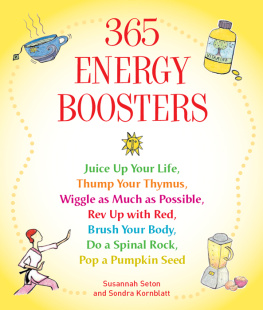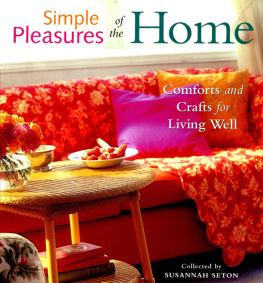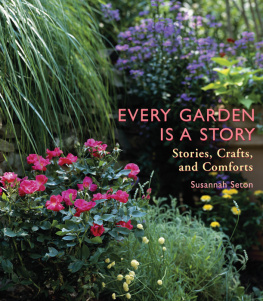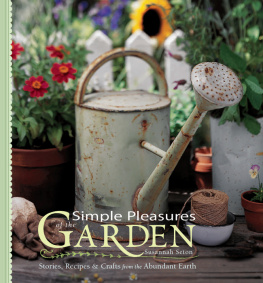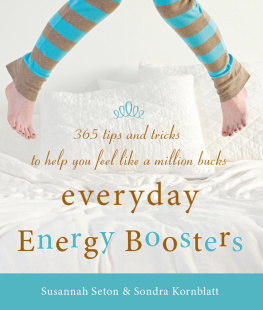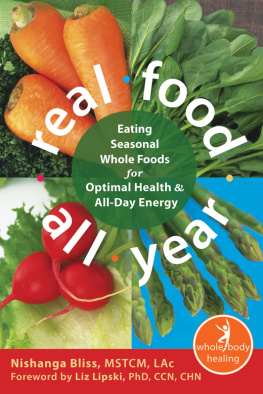

First published in 2005 by Conari Press,
an imprint of Red Wheel/Weiser, LLC
York Beach, ME
With offices at:
368 Congress Street
Boston, MA 02210
www.redwheelweiser.com
Copyright 2005 Susannah Seton and Sondra Kornblatt
All rights reserved. No part of this publication may be reproduced or transmitted in any form or by any means, electronic or mechanical, including photocopying, recording, or by any information storage and retrieval system, without permission in writing from Red Wheel/Weiser, LLC. Reviewers may quote brief passages.
Library of Congress Cataloging-in-Publication Data
Seton, Susannah
365 energy boosters : juice up your life, thump your thymus, wiggle as much as possible, rev up with red, brush your body, do a spinal rock, pop a pumpkin seed / Susannah Seton and Sondra Kornblatt.
p. cm.
Includes bibliographical references.
ISBN 1-57324-869-X
1. Health. 2. Vitality. 3. FatiguePrevention. 4. Mental
fatiguePrevention. I. Title: Three hundred sixty-five energy boosters.
II. Kornblatt, Sondra. III. Title.
RA776.5.S435 2005
613dc22
2005013603
Typeset in Minion, Mrs. Eaves, and Pike by Jill Feron/FeronDesign
Printed in Canada
FR
12 11 10 09 08 07 06 05
8 7 6 5 4 3 2 1
www.redwheelweiser.com
www.redwheelweiser.com/newsletter

Energy is all there is! Remember the parable in the Bible about the man who sells all he has to buy the one pearl of great price? Your true energy is this pearl.
Tae Yun Kim
Contents
NOTE TO READERS
This book is intended to provide educational information for the reader. It is not intended to take the place of personalized medical counseling, diagnosis, and treatment from a trained health professional. Nor is it intended to replace or conflict with advice given to you by your physician or other healthcare professional. We recommend that you always seek medical advice before following any treatment. The authors and publisher cannot be held responsible for the safety or effectiveness of any treatment mentioned or any results arising from the use or application of the information in this book.
INTRODUCTION
Tired of Feeling Tired?
Energy is eternal delight.
William Blake
A friend with four kids under the age of seven and a full-time job recently had to go into the hospital for minor surgery.I'm actually looking forward to it, he confided. Finally I can get some rest.
I know the feeling, don't you? Whatever our circumstances, no matter our age, we're all working longer and harderand feeling the effects. According to HealthFocus International, an organization that tracks health trends, more than half of women between the ages of eighteen and forty-eight complain of lack of energy.
I know that was true for me. I'd been dragging for years when I had the idea to finally do something about it. I'd write a book on the best ways to get more energy! That's how I learncollecting tips for books and trying them out. There was only one problemI was so tired that it felt daunting to do it on my own. Having done a 365 book before, I knew how much work it takes.
Then I met Sondra Kornblatt, a writer specializing in sleep and wellness. Immediately I realized that she would be the perfect collaboratorwe could divvy up the task. And so we did. And in the process, I learned many ways to restore and rejuvenate my body, mind, and spirit. Now, after trying many of the boosters in this book, I sleep better and have more energy for what really matters to me. I also learned what my daily energy pattern wasI no longer expect it to remain steady throughout the day and thus don't think there is something wrong with me.
But don't take my word for it; try some for yourself. You will find that we offer a huge variety of approachessome mental, some emotional, others physical. That's because the life force that we call energy is influenced by all those domains, and the reasons we feel low energy can be from any number of physical, emotional, or mental strains.
You'll find suggestions for exercises, for supplements, for getting organized, for meditations, for energy-boosting aromas, and food. You'll discover ideas for getting real rest, for ruling out environmental problems like mold, for one-minute energizing moves at your desk, and hundreds more. All of these are suggestionsnot meant to substitute for medical advice, for fatigue can be a symptom of serious illness. You can't possibly do them allthat's exhausting even to contemplatenor are you meant to. There are 365 so that you can pick and choose the approaches that seem right to you. As you read through, notice what ideas jump out at you. Pick one or two of those. Then commit to doing them for a couple weeks and track the effect. If it's working, great. If not, try something else. Just don't try too many at once because it will be difficult to know which method is actually working for you.
It is my hope that you find ideas in here that will put a spring back into your step and the feeling of zest back into your life. Energy is your most precious human resource. Without it, you simply go through the motions of your life. With it, you have the oomph to passionately engage in your work and your relationships, and experience the simple joy of being alive that is your birthright.
SUSANNAH SETON
Understand Energy Cycles
Energy ebbs and flows during the day. In his book Calm Energy, mood scientist Robert E. Thayer cites research that shows how energy typically follows a pattern: low upon waking, rising to a high in late morning or early afternoon, declining in the afternoon, perhaps with a slight rise in early evening, followed by a steady decline until bedtime.
This information can be liberating. You're not supposed to feel perky all day longit's natural for it to ebb and flow! Once you understand this, you can stop feeling something is wrong with you when you feel low energy in the late afternoon and evening. It's your biorhythmsand it happens to everyone, with slight variations. Now doesn't that make you feel better?
Track Your Energy/Tension Cycles
In Calm Energy, Robert Thayer points out that in addition to natural energy cycles we also have tension cycles: tension tends to be lowest when waking, and increases throughout the day, reaching a peak at about five p.m. The relationship between energy and tension is critical for understanding our everyday behavior, he writes. When our energy is high, we can withstand stress with relative impunity. But as our energy drops, stress can have its greatest effect. One negative effect of this period of tense tiredness is that we often do things we would prefer not to do to self-regulate the unpleasant state. Things like eating or drinking, or not exercising.
When you put the two cycles together, in general, between ten a.m. and one p.m. is a time of the highest energy and lowest tension, the perfect time to do challenging tasks. If you are interested in tracking your specific cycles, you need to do it for three days. Pick typical days when you go to bed and get up at regular times and face ordinary tasks. Rate yourself on the hour, every hour from waking to sleeping on a scale of 1 to 10 for energy (1 being lowest) and a separate scale for tension (1 being lowest). Use a kitchen timer to remind yourself to do it.
Next page
